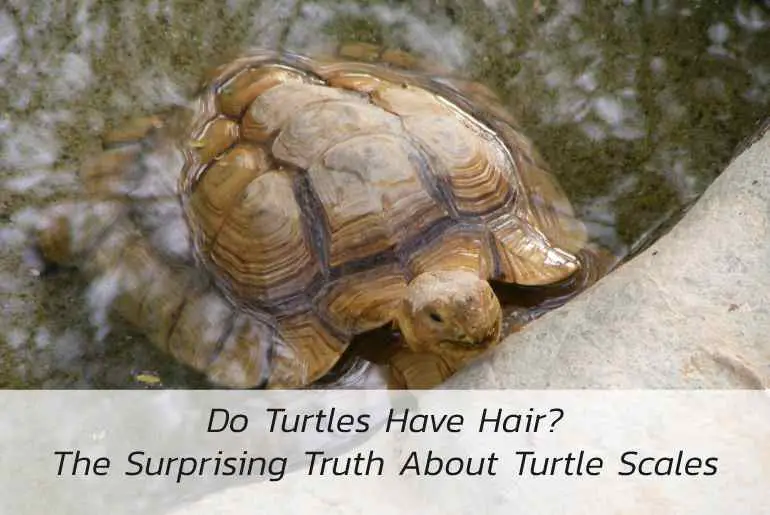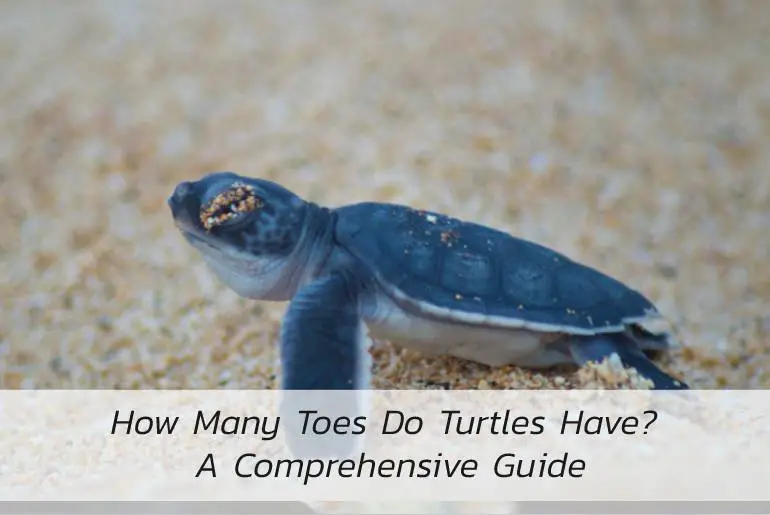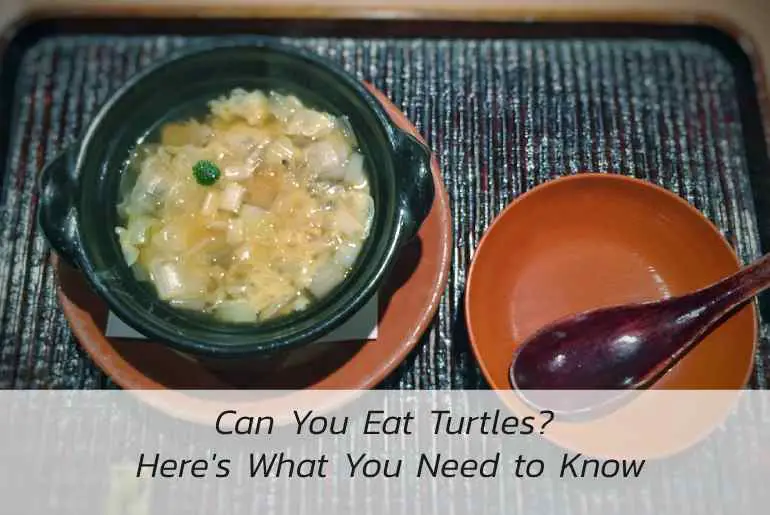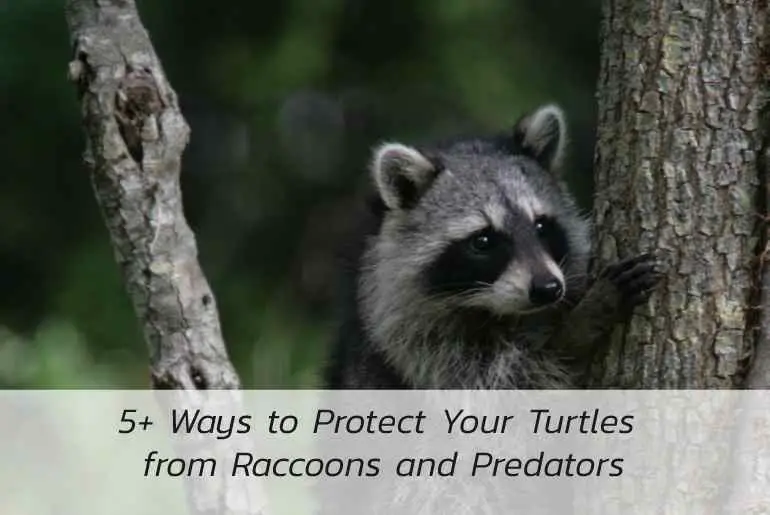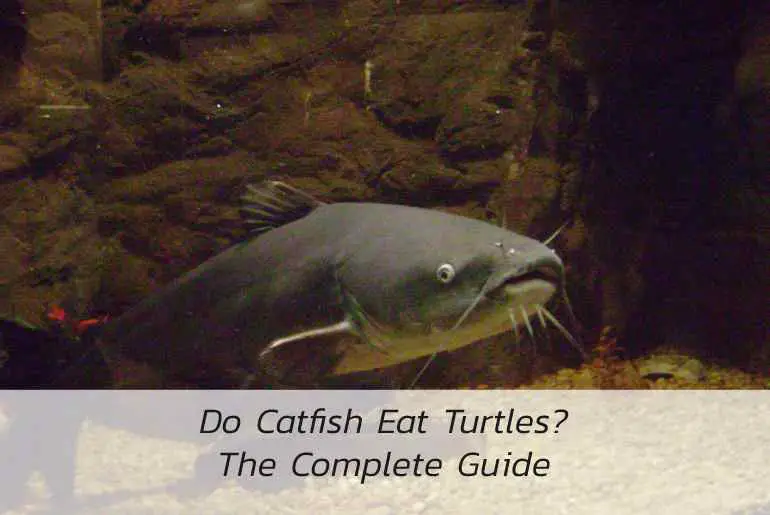You may have heard that turtles don’t have hair, but did you know why? It turns out that the scales on a turtle’s back are actually quite similar to hair follicles. In this blog post, we will take a closer look at the surprising truth about turtle scales. We’ll also explore what turtles’ skin is like and find out if turtles have hair!
Unlike mammals, turtles don’t have any placodes in their embryos- meaning that scientists couldn’t discover their scale patterns until recently! This is because placodes are small, thickened areas of skin that give rise to hair follicles, sweat glands, and other structures. While all turtles have scales, the patterns and shapes of these scales can vary greatly between species.
Do Turtles Have Hair?
No, turtles do not have hair. However, the scales on their back are quite similar to hair follicles. In fact, the scientific name for a turtle’s shell is “keratinized skin.” Keratin is a tough protein that helps to protect the underlying skin from damage.
Turtles’ skin is actually quite sensitive, and they rely on their shell for protection from the sun and predators. The shell also provides a place for turtles to store fat, which they can use for energy when food is scarce.
While all turtles have scales, the patterns and shapes of these scales can vary greatly between species. For example, some turtles have large, plate-like scales while others have small, granular scales.
For a long time, scientists believed that hair and scales in animals developed independently from each other. The discovery of placodes jump-started this conclusion. Placodes are tiny bumps of tissue found on the surface of a developing embryo. These thick tissues later develop into feathers and hair.
Expert researchers only saw placodes in embryos of birds and mammals, which gave the initial indication that only these two groups would grow to have feathers and hair – similarly to how reptiles don’t have either.
However, recent discoveries have since struck this theory down. It has been found that turtles also have these protein-rich bumps on their skin during development. They just weren’t noticed before because they’re so small! These new findings now support theories that feathers, hair, nails, and scales are all made from the same protein – keratin.
So while it may look like turtles are bald, they’re actually just rocking some impressive scaly armor.
Why Couldn’t Scientists Discover Placodes In Turtle Embryos Before?
The answer to this question lies in the size of placodes. Placodes are small, thickened areas of skin that give rise to hair follicles, sweat glands, and other structures. They’re typically only found in embryos of birds and mammals.
If you’re a fan of turtles, you might be interested to know that their development is quite different from other animals. For example, did you know that turtles have something called placodes?
Placodes In Turtles
Placodes are temporary embryonic structures that give rise to various sense organs, including the inner ear, lens of the eye, and teeth. In mammals and birds, placodes are evident for extended periods of time and can easily be detected by scientists.
However, in turtles, placodes only form for a brief period (approximately 12 hours) and appear in a random, disorderly fashion. This makes them much more difficult to spot. Additionally, the presence of placodes varies greatly from one turtle species to another.
Placodes are bumps on an embryo that help to form certain structures. In most animals, placodes are easy to spot and last for a long time. But in turtles, placodes are brief and random. They only last for about 12 hours, and they pop up in a disorderly fashion. This makes them quite hard to spot. What’s more, the way placodes form varies from one turtle species to another.
Until recently, this randomness wasn’t well understood, so scientists assumed that placodes weren’t present in turtle embryos at all. However, new research has shown that turtles do have placodes – they’re just harder to spot than in other animals. This is because turtles are descendants of the same ancient lineage as birds, mammals, and reptiles. So even though they look quite different on the outside, they still share some similarities in their development.
What is Turtle’s Skin Like?
Imagine being able to withstand cold temperatures so well that you could practically live in the artic! Well, that’s exactly what some turtles can do. You see, their skin is thick and rubbery and infused with oil, which makes for great insulation against the cold.
In fact, their skin is so tough that it can actually withstand being bitten by a predator! Now that’s pretty impressive, don’t you think? So the next time you’re feeling a little chilly, just be thankful you’re not a turtle.
Turtles And Scales
Turtles are unique creatures, and their scales are one of the things that make them so special. Unlike other animals, turtles have two sets of scales: an inner set of bony plates and an outer set of keratinous scutes.
The combination of these two types of scales makes for a tough exterior that can protect turtles from predators and the elements. So if you ever find yourself in need of some extra protection, you might want to consider getting a turtle shell.
Do Mary River Turtles Have Hair?
As we’ve seen, not all turtles have hair. In fact, most turtles are bald! However, there are one species of turtle that is an exception to this rule: the Mary River turtle.
The Mary River turtle is a unique species of freshwater turtle that is found in Australia. Unlike other turtles, the Mary River turtle has soft, silky hair on its head and legs. This hair is thought to help the turtle absorb heat from the sun, which is necessary for thermoregulation.
So there you have it! The next time you see a turtle, take a closer look and see if you can spot any hair. You might just be surprised by what you find.
How To Remove Algae From Turtle Tank?
If you have a turtle tank, then you know that algae can be a real pain to deal with. Not only is it unsightly, but it can also make your turtle’s water quality poor. So what’s the best way to get rid of algae?
Vacuum Algae
There are a few different methods you can use, but one of the most effective is to vacuum it up simply. You can either use a regular vacuum cleaner or a wet/dry vacuum. Just make sure you remove as many algae as possible so your turtle can have clean, fresh water.
Keep Algae Eating Fish
Another method you can use is to add some algae-eating fish to your turtle tank. These fish will help keep the algae. Some good choices include guppies, plecos, and otocinclus.
Algae Scraper and Algae Pad
If you don’t want to add any fish to your turtle tank, then you can use an algae scraper or algae pad. These are great for getting rid of small amounts of algae. Just be careful not to damage your turtle’s shell while you’re scraping!
Clean Aquarium Gravel Once A Month
One of the best ways to prevent algae is to clean your turtle tank gravel once a month. This will remove any build-up of algae and keep your water quality high.
HTH 67032 Super Algae Guard Swimming Pool Algaecide Cleanser works well for aquariums.
Dry The Decorations In Sun Once A Month
Algae growth in a turtle tank can be unsightly and harmful to your turtle’s health, so it’s important to keep it under control. There are a number of things you can do to prevent algae growth, and one of them is to dry your decorations in the sun once a month. This will kill any algae that might be growing on them.
Algae need light and warmth to grow, so you can effectively prevent their growth by depriving them of these things. Additionally, clean your tank regularly and vacuum the gravel to remove as many algae as possible.
Final Words
Turtles are amazing creatures, and there’s still so much we have to learn about them.
So if you’re ever curious about something, don’t be afraid to ask. Who knows? You might just end up learning something new. Thanks for reading! 🙂
If you want to know more about turtles, you might also be interested in our following articles:
- Can Turtles Eat Dog Food? The Truth About Feeding Dog Food
- Can Turtles Eat Spiders? Will Your Turtles Die?
- Do Catfish Eat Turtles? – The Complete Guide
- 5+ Ways to Protect Your Turtles from Raccoons and Predators
- Fun Facts About Turtles: Are Rainbow Turtles Real?
- Do Owls Eat Turtles? – The Ultimate Guide

